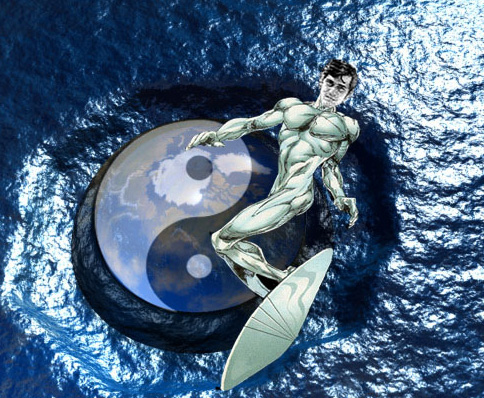
The thoughts and ideas that flooded my cranium took form in two different components... A new ring generator and a modified frequency generator. I built the generator from scratch using old school technology like circuit boards, resistors, capacitors, and potentiometers, with an extra 9 volt battery that not only allows this unit to run three times longer but with increased amperage. The thought came to me that I should install a few solar collectors to let the sun power this succor up, with some caps to store the unused charge that can be metered out at night, but that idea will have to sit on the back burner for awhile. I got bigger fish to fry.
The ring generator was easier to make than I thought it would be. All it took was an angel-food cake pan and a short piece of PVC pipe for the mold, lots of micron sized particles of aluminum, iron oxide, brass, some ground up crystal shards, and a large mobius coil in the center. I found, in powered applications like this, the smaller the metals, the more powerful the unit becomes. The trade off is, it won't work without some kind of power. That's what the frequency generator is for.
When working with powdered metals it's important to mix the metal with the resin before you pour, otherwise it'll end up like gravy when you add the flour in the last step. It lumps together in dry bubbles of powder. Also, when this resin cures it shrinks. That's a good thing because it releases from the outer sides of the mold but when you use an inner mold, it tends to compress around it, giving it a very tight fit. Unless you can find something a few millimeters larger you'll end up machining the hole. Using vasoline as a release agent helps because the resin won't get past it and makes getting it out of the mold so much easier.
 The first test was rather impressive. Firing up the ring with a piece of orgonite in the middle clearly shows the energy signature of the piece your using. This is the best way I know of to tell what shape works best for whatever application you're looking for. For this cloudbuster, a cone tested out as the best shape because of the laser-like energy coming out the top. The opposite end of the scale would be an orb, which sends out energy in all directions.
The first test was rather impressive. Firing up the ring with a piece of orgonite in the middle clearly shows the energy signature of the piece your using. This is the best way I know of to tell what shape works best for whatever application you're looking for. For this cloudbuster, a cone tested out as the best shape because of the laser-like energy coming out the top. The opposite end of the scale would be an orb, which sends out energy in all directions. Assembled, this unit performed spectacularly.

It was a crappy day. One of those fall days you'd rather be somewhere else. Cold, dreary, and horizon to horizon clouds. Perfect for this test. I fired it up, pointed it east and within 15 minutes the sky turned blue where this unit was pointing and tiny droplets of rain came down, indicating the clouds were beginning to break up. The southern sky was still filled with clouds so I repositioned it and within minutes the southern sky began breaking up. A half hour after starting this test, the sky was now blue in the directions I pointed this cloudbuster. You could see the clouds literally falling apart and being replaced by sylphs.
The reflective character of the satellite dish really ramped up the energy flow and focused it like a beam. A nice thing about these dishes are they're easy to mount and swivel in any direction. You'll notice this is a Primestar dish. I got this dish when Primestar was bought out by Direct TV and everyone on the old system had to scrap these old dinosaurs for the new and better dish. If you dig around you'll be sure to find tons of these units for the asking.
I can't help thinking this unit has many more uses than weather modification. I wonder what would happen if I pointed it toward Washington?


2 comments:
Busy isn't word is it!! Wow, looks pretty impressive honey. Good to see the old T back at work. Love ya Reet
Thanks, Reet. The video is even more impressive. I documented each step and I have to say this is my most powerful device to date.
I'm working on a hand held unit. I'll keep ya posted.
It sure feels good to be back in the game again.
Check this.
http://www.youtube.com/watch?v=sUuxBb9wta4
Post a Comment